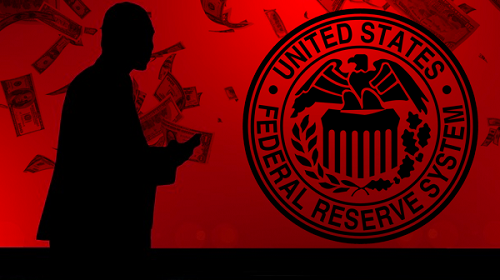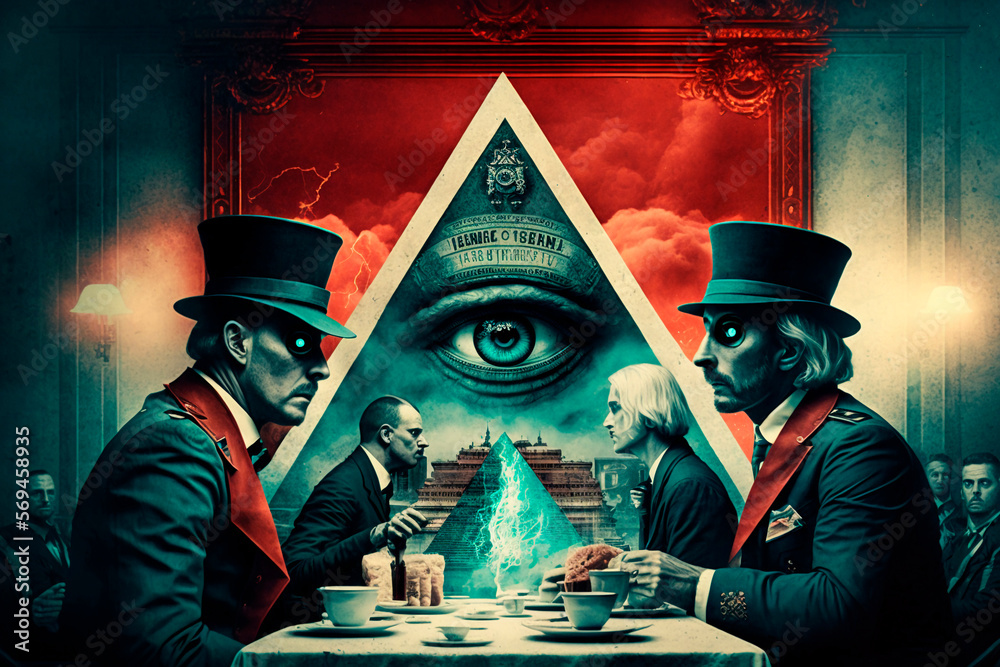This article was originally published by George Ford Smith at The Mises Institute.
A central bank is not a natural product of banking development. It is imposed from the outside or comes into being as a result of government favors. —Vera Smith, The Rationale of Central Banking and the Free Banking Alternative
Anarchy, the absence of coercive government, must not be confused with chaos. —Robert P. Murphy, Chaos Theory
The Federal Reserve is dying from monetary mischief. The Fed recently made a woke mandate that will only accelerate its own demise. The Fed never should have existed. As a central bank, the Fed is a rogue institution that functions as a giant counterfeiter for hegemonic government and special interests.
The government signed off on the Fed long ago and soon found it indispensable for funding whatever politicians could dream up. Together they have destroyed the Declaration’s philosophy of individual rights and replaced it with a system far worse than the one from which the Founders seceded. The Fed is killing itself through its inherent flaws—especially the premise that increasing the money supply is necessary for prosperity. The very existence of the Fed distorts economic forecasting, creating the disastrous business cycle that it was supposed to make mathematically impossible.
Yet, one could argue that the Fed and central banks in general are critical for engaging in war. A case in point is Word War I, when all the belligerents abandoned the gold standard and proceeded to slaughter one another on credit. The war machines were fed a constant supply of monetary promises that would not have been possible if citizens, and not their government, had sovereignty over money.
But the states didn’t want restrictions from the ones doing the fighting. They wanted them to stay in the trenches and kill the guys on the other side. This is why the higher echelon commanders were furious over the impromptu Christmas truce of 1914 on the Western Front. Given that John Maynard Keynes later denigrated the gold standard as a barbarous relic, it’s ironic that gold had to be imprisoned before states could engage in wanton barbarism.
Why Do Nations Fight?
Over the centuries gold and silver arose as the market’s choice of money. But the market is not a life-or-death battlefield, at least not in the literal sense. How did it happen that nations are so often engaged in war when peace, production, and trade serve their best interests?
Sociologist Franz Oppenheimer provided some clues. As he wrote in his classic treatise, The State, in which he presented the genesis and development of various kinds of states, “There are two fundamentally opposed means whereby man, requiring sustenance, is impelled to obtain the necessary means for satisfying his desires. These are work and robbery, one’s own labor and the forcible appropriation of the labor of others.”
Oppenheimer continues,
Everywhere . . . at all places on this planet where the development of tribes has at all attained a higher form, the State grew from the subjugation of one group of men by another. Its basic justification, its raison d’être, was and is the economic exploitation of those subjugated. (emphasis mine)
The state, then, had coercion as its guiding principle, and it would seem plausible that it would regard other states, weaker ones especially, as people to conquer and exploit.
The Young Republic Goes Statist
The history of how the American republic fell into the clutches of statism is long and ongoing, but a good starting point is the radical revisionary work of historian Leonard L. Richards: Shays’s Rebellion: The American Revolution’s Final Battle. The standard story of the rebellion as an uprising of indebted farmers in Western Massachusetts who refused to pay their taxes simply did not wash, Richards argues.
Based on his archival research, the insurgency was in fact a protest of western farmers, many of them veterans of the revolution and leaders in their towns, against the Massachusetts government for its attempt to enrich the few at the expense of the backcountry. Yet the ahistorical version prevailed, and the new country got a constitution that, even with the Bill of Rights, opened the door for state treachery.
And it impacted central banking almost immediately. On March 6, 1819, the Supreme Court ruled in McCulloch v. Maryland that “Congress had the authority to establish a federal bank.” Luther Martin, arguing for Maryland, had pointed out that there was no clear language in the Constitution for establishing a federal bank, but Alexander Hamilton’s implied powers overruled the evidence.
End the Fed
For the American state today, the demise of the Fed would de facto negate state monetary sovereignty. Fiat money had its chance and has left us in ruins, and the people don’t trust the Fed’s central bank digital currencies. People would discover and use sound money for the first time in their lives, and what an exhilarating experience that would be!
Too many people are dependent on the state, which could not survive in its present form—a psychotic wastrel in global and domestic affairs—without the Fed’s ever-compliant printing press. Yet, almost no one expects or wants the state to disappear from their lives. They believe even a corrupt state beats the alternative of no state, if for no other reason than warlords would take over. Americans, like citizens in other countries, suffer from Stockholm syndrome. They need to get over it.
If the Fed goes, the state will be like a boxer who’s lost his punch. We will be close to what philosophers call a state of nature, starting from scratch. People will have to discover what it means to take responsibility for their lives. Whether it’s Hobbes’s “war of every man against every man” or Locke’s peaceful recognition of every man’s natural rights, upon which this country was founded, it would be up to them.
As brutal as a fresh start would be, we would be wise to welcome it.









0 Comments